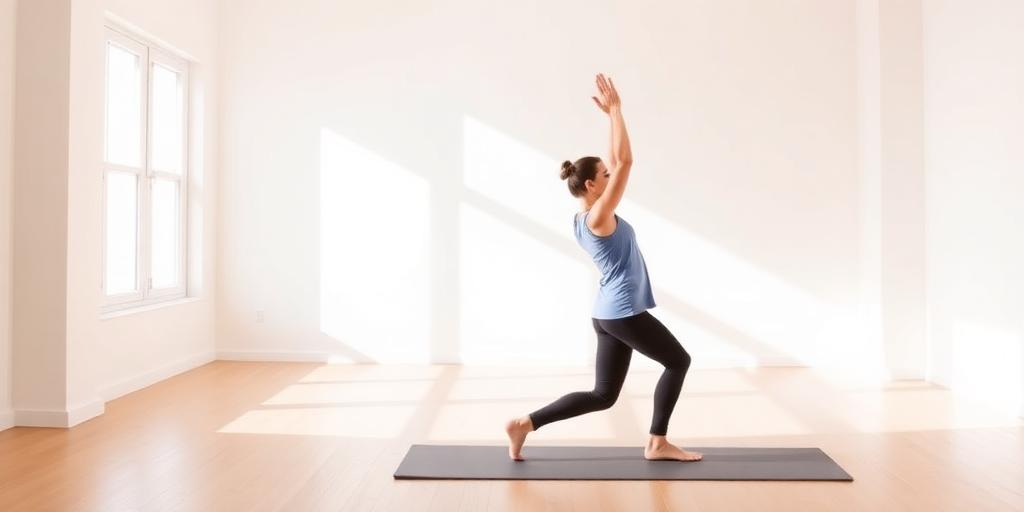Understanding the Importance of Mobility and Flexibility
Mobility and flexibility are often used interchangeably, but they represent distinct aspects of physical fitness. Mobility refers to the range of motion around a joint and the ability to control movement through that range. Flexibility, on the other hand, is the ability of a muscle to lengthen. Both are crucial for overall physical health, injury prevention, and optimal athletic performance.
Why Focus on Mobility and Flexibility?
- Injury Prevention: Improved mobility and flexibility reduce the risk of strains, sprains, and other injuries by ensuring your body can handle a variety of movements without undue stress.
- Enhanced Athletic Performance: Greater range of motion translates to more efficient and powerful movements, benefiting athletes in all sports.
- Improved Posture and Balance: Regular mobility and flexibility training can correct muscular imbalances, leading to better posture and balance.
- Reduced Pain and Stiffness: These exercises can alleviate chronic pain and stiffness, especially in areas like the back, hips, and shoulders.
- Increased Blood Flow: Stretching and mobility work promote better circulation, aiding in muscle recovery and reducing soreness.
Key Components of Effective Training Programs
A well-designed training program should incorporate several key elements to maximize results and minimize the risk of injury.
1. Dynamic Stretching
Dynamic stretches involve movement and help to warm up muscles and increase blood flow. Examples include arm circles, leg swings, and torso twists. These are best performed before workouts.
2. Static Stretching
Static stretches are held for a period of time, typically 20-30 seconds, to lengthen muscles and improve flexibility. Examples include hamstring stretches, quad stretches, and shoulder stretches. These are ideal for post-workout or as a separate flexibility session.
3. Foam Rolling
Foam rolling, or self-myofascial release, helps to break up adhesions and knots in the muscles, improving mobility and reducing muscle soreness. Focus on major muscle groups like the legs, back, and shoulders.
4. Joint Mobility Exercises
These exercises target specific joints to improve their range of motion and stability. Examples include ankle circles, hip circles, and wrist extensions. These can be incorporated into warm-ups or as standalone sessions.
5. Strength Training
Strength training is essential for building muscle and supporting joints through their full range of motion. Include exercises that promote full range of motion, such as squats, lunges, and overhead presses.
Sample Training Programs
Here are a few sample training programs to help you get started. Always consult with a healthcare professional or certified trainer before beginning any new exercise program.
Program 1: Morning Mobility Routine (15 minutes)
- Neck Tilts: 10 repetitions each side
- Arm Circles: 10 forward, 10 backward
- Torso Twists: 10 repetitions each side
- Leg Swings: 10 repetitions each leg (forward and sideways)
- Ankle Circles: 10 repetitions each foot
Program 2: Post-Workout Flexibility Session (20 minutes)
- Hamstring Stretch: 30 seconds each leg
- Quad Stretch: 30 seconds each leg
- Calf Stretch: 30 seconds each leg
- Shoulder Stretch: 30 seconds each arm
- Tricep Stretch: 30 seconds each arm
Program 3: Full Body Mobility and Flexibility (30 minutes)
- Dynamic Warm-up: 5 minutes (arm circles, leg swings, torso twists)
- Foam Rolling: 10 minutes (legs, back, shoulders)
- Static Stretching: 15 minutes (hamstrings, quads, calves, shoulders, triceps, hip flexors)
Tips for Success
- Consistency is Key: Aim to incorporate mobility and flexibility training into your routine at least 3-5 times per week.
- Listen to Your Body: Never push yourself beyond your pain threshold. Slight discomfort is okay, but sharp pain is a sign to stop.
- Proper Form: Focus on maintaining proper form to avoid injuries and maximize the effectiveness of each exercise.
- Stay Hydrated: Drink plenty of water to keep your muscles hydrated and flexible.
- Breathe: Deep, controlled breathing can help relax your muscles and improve your range of motion.
By integrating these training programs and tips into your fitness regimen, you can significantly improve your mobility and flexibility, leading to a healthier, more functional body.









